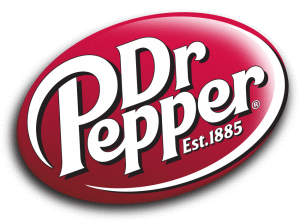There are many different ways that investors use to try and determine a stock’s share price and what it is really worth. Typically, investors fall into one of two categories. They are either financial analysis investors or technical analysis investors.
Investors who use financial analysis use many means to price a stock’s shares. Two of the most popular methods are the price to earnings ratio simply called the PE ratio and growth rate.
What Is A PE Ratio? And, How Do You Calculate It?

With $528 million divided by the 216.4 million shares outstanding gives you the earnings per share of $2.44. With the price of Dr. Pepper currently at $36.97, dividing that amount by the $2.44 gives you a price to earnings ratio or PE ratio of 15.
How To Predict Value With A PE Ratio
So, is a PE ratio of 15 good, bad, or indifferent for Dr. Pepper Snapple Group? A low PE ratio for a company’s stock insinuates that a company’s share price may be a good value to purchase. A high price to earnings ratio may not necessarily be a bad thing. But, it does imply that investors will have to pay a higher share price for the similar earnings.
Many investors like to compare the PE ratio of a company with other similar stocks in their industry. For example, Pepsi has a PE ratio of 15.36, and Coca-Cola has a price to earnings ratio of 12.6.
Another way to evaluate a company is by comparing their PE ratio by the ratio for the broader index. Dr. Pepper Snapple Group is a member of the S&P 500 index whose PE ratio is currently 14.26 according to Barron’s. That implies that Dr. Pepper’s PE ratio of 15 is pretty close to being right in line with the market as a whole.
What Is A PEG Ratio?
One other great ratio to quickly get a sense of how a stock’s price is valued is to look at its growth rate. Many investors us a PEG ratio which incorporates a stock’s growth rate into the price to earnings ratio. When you calculate a company’s PEG ratio, you take the PE ratio and divide that number by the company’s current earnings growth rate.
So, for example, if a company has a PE ratio of 15 and its earnings are growing at a 10% rate year over year, then that company’s PEG ratio would be 1.5 (15/10=1.5 PEG). Dr. Pepper Snapple Group’s earnings grew from $2.17 per share in 2009 to $2.44 per share in 2010. So, they had an earnings growth rate of 12.4%, and their PEG ratio is 1.2 (15/12.4=1.2).
It is typically considered that a company that is fairly priced based on current share prices in the market has a PEG ratio of 1.0. A PEG ratio of less than 1.0 implies a good deal on the share price based on the amount the company is growing. A PEG ratio of over 1.0 implies that the company’s earnings growth is not keeping up with the stock’s share price.
Are these ratios the “be all to end all” for pricing a share of stock for a company? Of course they aren’t. There is a lot of factors that go into pricing shares of stock, but using a company’s PE ratio and growth rate are quick ways to get a sense of the stock’s current value. They are good tools to add to your investor bag of tricks and techniques.
Disclaimer: Don’t forget that I currently own shares of Dr. Pepper Snapple Group. I’m a huge fan of the company and their products, but by using them as my example does not constitute a recommendation for you to buy or sell shares of their common stock.

I agree… the P/E ratio is easily manipulated… but when you take growth into account, you get a more useful number. That’s why I tend to focus on ROE… revenues are critical to growth, not merely the ability to cut expenses.
Before Enron collapsed, it traded with a PE ratio of about 55. What were investors thinking?
My thought is that they were drinking the Enron koolaid! lol So many people got sucked into the hype. How can a company sustain growth that consistently?